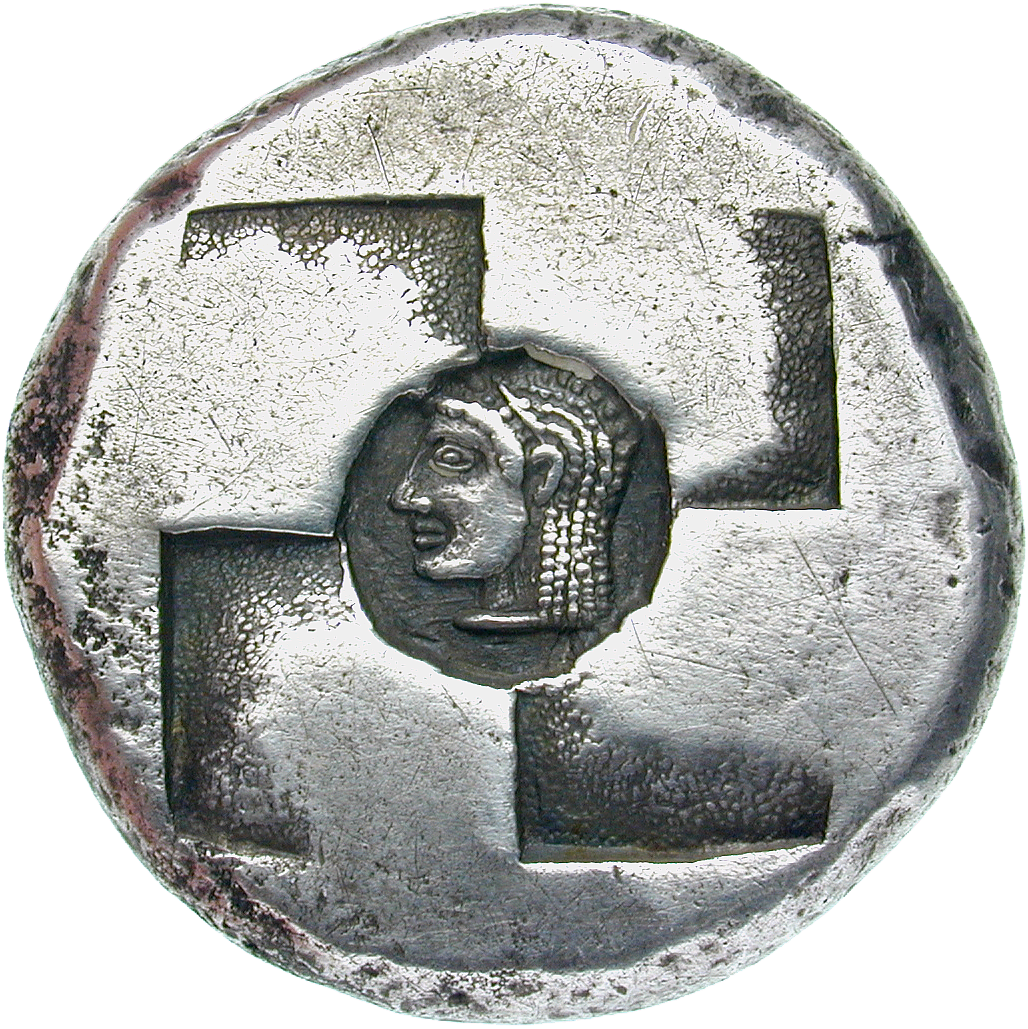Diese Tetradrachme aus der sizilischen Stadt Syrakus ist für die Münzgeschichte von grosser Bedeutung. Sie stammt aus der Zeit zwischen 510 und 500 v. Chr. und gehört zu den ersten in Sizilien geschlagenen Tetradrachmen. Die Vorderseite zeigt einen Wagenlenker mit einem Viergespann nach dem Rennen. Auf der Rückseite – und dies ist eine bedeutsame Neuerung – ist im inkusen Quadrat der Kopf der Nymphe Arethusa zu sehen. Damit taucht auf dieser Tetradrachme erstmals ein echtes Rückseitenbild auf. Der anfänglich kleine Kopf im Zentrum der Münze wurde im Lauf der Zeit vergrössert, bis er schliesslich bildfüllend war.
Die Tetradrachmen von Syrakus entwickelten sich rasch zur Standardwährung auf Sizilien, und die Stadt wurde eine der wichtigen Münzstätte auf der Insel. Ihre Münzen gehören zu den schönsten und kunstvollsten der Antike.

